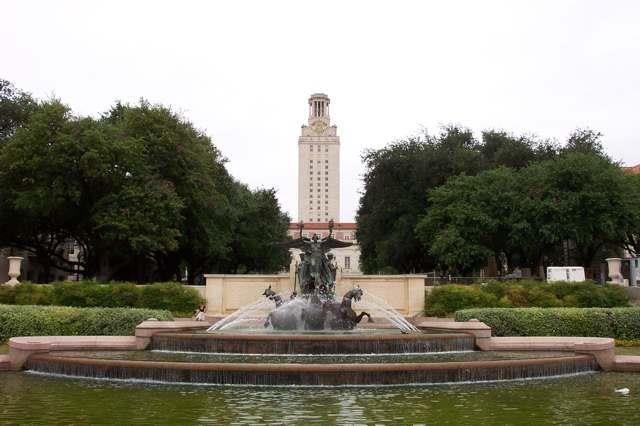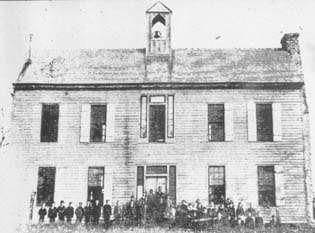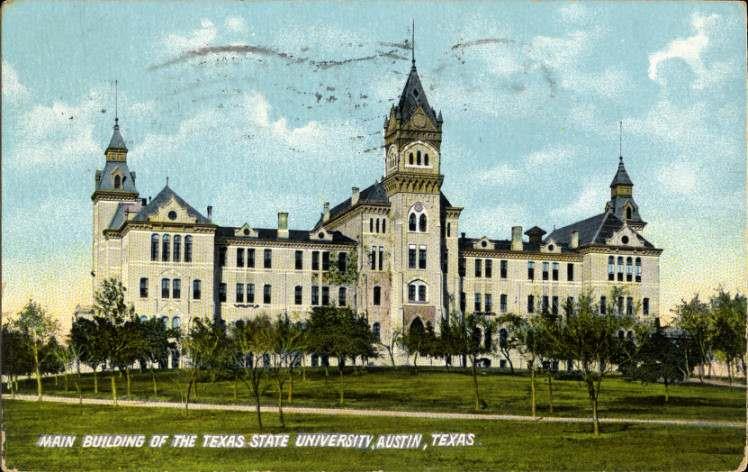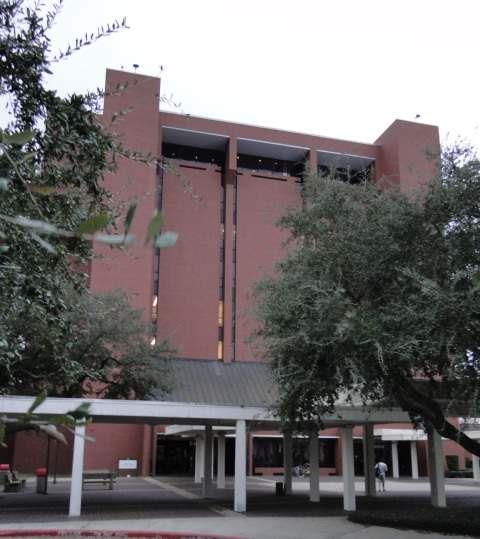Texas holds a distinguished history in higher education, with various university systems that have contributed significantly to the academic landscape of the United States. Among these, the Texas State University System is the oldest, established in 1911. This system marks the earliest consolidation of higher education institutions in Texas, setting a precedent for future educational structures in the state.
While not designated as a flagship model, the Texas State University System operates uniquely, treating each institution equally important. Over time, these universities have grown in size and reputation, fostering academic excellence and research advancements. Meanwhile, Baylor University is recognized as the oldest independent university in Texas, with its roots tracing back to the 19th century.
Key Takeaways
- The Texas State University System is the oldest in Texas, founded in 1911.
- There are 6 university systems in Texas
- The Texas State University includes Lamar University, Sam Houston State University, Sul Ross State University, and Texas State University
The University Systems in Texas
A university system is a group of universities that are governed by a common board of regents. The universities in a university system usually share some common characteristics, such as a common athletic conference or academic association. In Texas, there are six university systems:
- The University of Texas System
- The Texas State University System
- The A&M University System
- The University of Houston System
- The University of North Texas System
- The Texas Tech University System
University of Texas System
The University of Texas System officially began operation with the opening of its flagship institution, the University of Texas in Austin, on September 15, 1883. It was created under the guidance of the Board of Regents and sustained by funds from the Permanent University Fund.
It comprises nine academic universities and five health institutions, including well-known campuses such as UT Austin, UT Dallas, and UT Arlington, as well as prominent medical centers like UT Southwestern and UT MD Anderson Cancer Center. This system is renowned for its substantial contributions to research and higher education, with a particular emphasis on medical and health sciences.
Texas State University System
The Texas State University System was established in 1911, making it Texas’s oldest higher education system. It was initially created to oversee state teacher colleges and has since evolved to include a broader array of institutions.
The system now consists of seven member institutions, including Lamar University, Sam Houston State University, Sul Ross State University, and Texas State University. These institutions offer a wide range of academic and career opportunities, focusing on preparing students to contribute to society globally. The Texas State University System is governed by a nine-member Board of Regents and is known for maintaining the lowest average tuition and fees among university systems in Texas.
Texas A&M University System
Following on the heels of the University of Texas System, the Texas A&M University System was created in 1948. However, its first and largest institution, Texas A&M University, was established much earlier in 1876, under the Morrill Act. This system also operates under the direction of a Board of Regents and benefits from the Permanent University Fund, supporting various educational institutions and agencies across the state.
University of Houston System
The University of Houston System, established in 1977, oversees four universities in Texas. It includes the flagship University of Houston, UH-Clear Lake, UH-Downtown, and UH-Victoria. Known for its diverse array of academic programs and research initiatives, it significantly contributes to the state’s higher education landscape.
University of North Texas System
The University of North Texas System, created in 2003, includes UNT Denton, UNT Dallas, and the UNT Health Science Center. With a strong focus on arts, science, and community service, it plays a vital role in educational and cultural development in the region.
Texas Tech University System
The Texas Tech University System, founded in 1996, comprises Texas Tech University, Texas Tech University Health Sciences Center, Angelo State University, and TTUHSC El Paso. This system is recognized for its contributions to agricultural, engineering, and health sciences education and research in West Texas.
How did University Systems in Texas Exist?
The oldest university systems in Texas have their roots deeply embedded in the state’s early history, reflecting the aspirations of the Republic of Texas to foster education.
The Republic of Texas, formed after its independence from Mexico in 1836, made early attempts to establish a foundation for higher education. Education was a priority for leaders who understood its importance for the young republic. In 1839, the Congress of the Republic of Texas legislated provisions to set aside land to establish two universities. However, these early initiatives would take many years to materialize into physical institutions.
In 1840, Rutersville College was chartered, marking the first chartered university in the would-be state. It laid down a precedent, though it did not survive long-term. In a significant stride, Southwestern University in Georgetown also procured its charter in 1840, becoming the first institution in Texas to operate under its original charter.
Not long after, in 1845, under the new statehood of Texas, the Republic chartered Baylor University, predicated on the foundations laid down by the Texas Baptist Education Society. The momentum continued when the Texas Constitution of 1876 mandated the creation of a “university of the first class,” which paved the way for establishing The University of Texas System, now recognized as one of Texas’ oldest and most prestigious higher education systems.
How Did The University System Expand?
As the oldest university system in Texas grew, it strategically enhanced its reach and service to the community by establishing branch campuses across the state and through medical education.
Creating Branch Campuses
The demand for higher education in Texas has led systems like the University of Houston System and the Texas Tech University System to develop branch campuses serving different regions. These campuses exemplify the commitment to providing wide-reaching educational opportunities.
For instance, Texas Tech University extended its presence through multiple satellite campuses, emphasizing a dedication to academic excellence and research prowess. Similarly, the University of Houston has increased its footprint with branch campuses, including UH-Clear Lake and UH-Downtown, enhancing access and supporting local communities.
Inclusion of Medical and Health Institutions
The University of Texas System took noteworthy strides in health education, notably with the University of Texas Medical Branch at Galveston, which has been in operation since the early years of the university. This institution paved the way for a robust network of health science centers that serve the state by providing cutting-edge medical training and health care services. The commitment to health education is shared across Texas – the University of North Texas System helms a significant health science center in Fort Worth, expanding access to medical education in Northern Texas.
Who Funds and Governs the University Systems?
In Texas, the sustainability and management of university systems are buoyed by robust financial foundations and structured governance. These elements are critical in supporting the vast academic networks within the state.
Permanent University Fund
The Permanent University Fund (PUF) is a cornerstone of financial stability for Texas’ higher education, particularly benefitting the University of Texas System and Texas A&M University System. Established in the Texas Constitution, the PUF is a public endowment contributing to the support and maintenance of eligible institutions. The fund’s assets include investments, but revenues from land and mineral rights significantly underpin it. Portions of these assets are distributed biannually following a constitutionally defined formula.
The Role of the Board of Regents
The governance of university systems in Texas is overseen by Boards of Regents, who carry the fiduciary responsibility to steward system resources effectively. Each university system is governed by its own board, comprised of regents appointed by the governor and confirmed by the state senate. These boards guide the system’s strategic direction, set policies, and oversee the administration. The regents work in conjunction with the system’s chancellor, ensuring that governance and financial oversight are executed with the institutions’ best interests in mind.
History of the Texas State University System, the Largest University System in the State
Now, let’s focus on the largest university system in the state, the Texas State University System. It all started in 1899 when the Texas Legislature authorized the establishment of Southwest Texas State Normal School in San Marcos, designed to prepare teachers. This was a significant step, considering the state’s focus on improving education, which began as early as 1893 when the legislature mandated teachers to complete specific courses before teaching in public schools.
The school’s first building, Old Main, was constructed in 1903 on land donated by the citizens of San Marcos, symbolizing the community’s commitment to education. This landmark continues to be central to the university’s identity. The school opened its doors in the same year with Thomas G. Harris as principal. Initially, its main objective was training teachers, a constant mission even as the institution evolved.
Throughout the years, the name and scope of this central institution changed several times, reflecting its growing role in Texas education. 1918 it transitioned into a senior college, becoming Southwest Texas State Normal College. By 1923, it was Southwest Texas State Teachers College and a member of the American Association of Teachers Colleges. Its growth was remarkable; by 1950, the campus had expanded from 11 to 65 acres, and the faculty grew from 17 to 105 members. The curriculum also broadened from teaching methods to encompassing various subjects.
The post-war years saw significant expansion, both in curriculum and physical infrastructure, including the addition of six new buildings. During World War II, the college contributed significantly by providing pre-aviation instruction to thousands of men and training others for war industries.
In 1959, the institution was renamed Southwest Texas State College, and in 1969, it became Southwest Texas State University, a name it held until 2003, when it was renamed Texas State University-San Marcos. This change reflected its transformation from a teacher-focused institution to a comprehensive university.
The establishment of the Texas State University System in 1975 marked a new era. The system, governed by a nine-member board of regents, brought together various institutions under its umbrella, expanding the reach and impact of higher education in Texas.
As of the early 21st century, Texas State University is a thriving institution with a rich history, a wide range of academic programs, and a commitment to serving the educational needs of Texas. The university system’s evolution mirrors Texas’s educational priorities and its dedication to fostering learning and development.
Key Institutions within the TSUS
The Texas State University System (TSUS) is an expansive and diverse network of institutions, each with its own unique identity and specialties, spanning from Big Bend Country to the Texas-Louisiana border.
Texas State University
The flagship institution of TSUS, Texas State University, was established in 1899 and joined the system in 1911. Located in San Marcos and with a campus in Round Rock, it has grown to become a major educational entity, serving a diverse student body with a wide range of academic programs. Texas State University is known for its comprehensive research and academic offerings and plays a vital role in the cultural and intellectual development of the region.
Lamar University
Located in Beaumont, Lamar University is an integral member of TSUS. Founded in 1923, it became a part of the system in 1995. The university is recognized for its strong programs and has an enrollment of over 16,000 students. Lamar University is known for its vibrant campus life and significant contributions to research and academic excellence.
Sam Houston State University
Established in 1879 and joining TSUS in 1911, Sam Houston State University is situated in Huntsville, with additional locations in Conroe and The Woodlands. The university has a rich history and offers a broad spectrum of programs, catering to over 20,000 students. Known for its strong academic offerings, Sam Houston State also has a notable presence in athletics.
Sul Ross State University
This university, founded in 1917, is located in Alpine, with branches in Del Rio, Eagle Pass, and Uvalde. Sul Ross State University serves a critical role in providing education to the regions it occupies, with a particular focus on programs suited to its unique geographical setting. It has a smaller enrollment but plays a significant role in the educational landscape of West Texas.
Lamar Institute of Technology, Lamar State College-Orange, and Lamar State College Port Arthur
These are other significant institutions within the TSUS. Each of these institutions has distinct programs and plays an important role in providing higher education in their respective regions.
Academic Programs and Research in TSUS
Run to R1: Texas State University’s Research Commitment
Texas State University is diligently working towards achieving the Carnegie R1 classification, indicative of the highest level of research activity. This effort, known as the “Run to R1,” is characterized by the university’s robust commitment to impactful applied research. In FY2023, Texas State University was awarded 234 grants and undertook 629 faculty research projects, spanning areas like health, societies, learning, environment, and innovation. This pursuit highlights Texas State’s position as a national research university with a strong focus on applied research that benefits society.
Faculty Achievements in Research
The faculty at Texas State University have earned recognition for their research prowess, with 19 members receiving the prestigious National Science Foundation CAREER awards. These awards are a testament to the university’s emphasis on high-caliber research and its impact on various disciplines, positioning Texas State as a leader in academic research.
Computer Science Department
Texas State University’s Computer Science Department stands out for its wide-ranging research in fields such as artificial intelligence, bioinformatics, cyber security, and sustainable computing. The department has experienced a significant increase in grant and research activities, with funding from renowned agencies and corporations. It’s noteworthy that faculty research has resulted in 16 patents in the past five years, and faculty members have received several high-profile awards, including NSF CAREER awards and Google Faculty Research awards, reflecting the department’s burgeoning reputation in computer science research.
Diverse Academic Programs at Texas State University
Texas State University offers extensive academic programs, including 97 bachelor’s, 88 master’s, and 12 doctoral degree programs. The university’s focus on research and development is highlighted by its increased spending in this area, amounting to $110 million in FY22. This investment in research underscores Texas State’s dedication to advancing knowledge and fostering innovation across various disciplines.
Undergraduate Research Opportunities
Undergraduate students at Texas State University are not left behind in their research endeavors. The university encourages undergraduates to engage in research projects across multiple disciplines, providing them with practical experience and a chance to contribute to the creation of new knowledge. This approach ensures that students receive a comprehensive education that blends theoretical learning with real-world application.
Final Thoughts
Texas State University System stands as a formidable pillar in the world of higher education in Texas. With opportunities for undergraduate and graduate research that pave the way for real-world application and knowledge creation, the TSUS plays a crucial role in shaping the future of education and research in the state. This system, with its rich array of academic offerings and growing research portfolio, continues to contribute significantly to the educational and intellectual landscape, not only within Texas but also on a national level.









